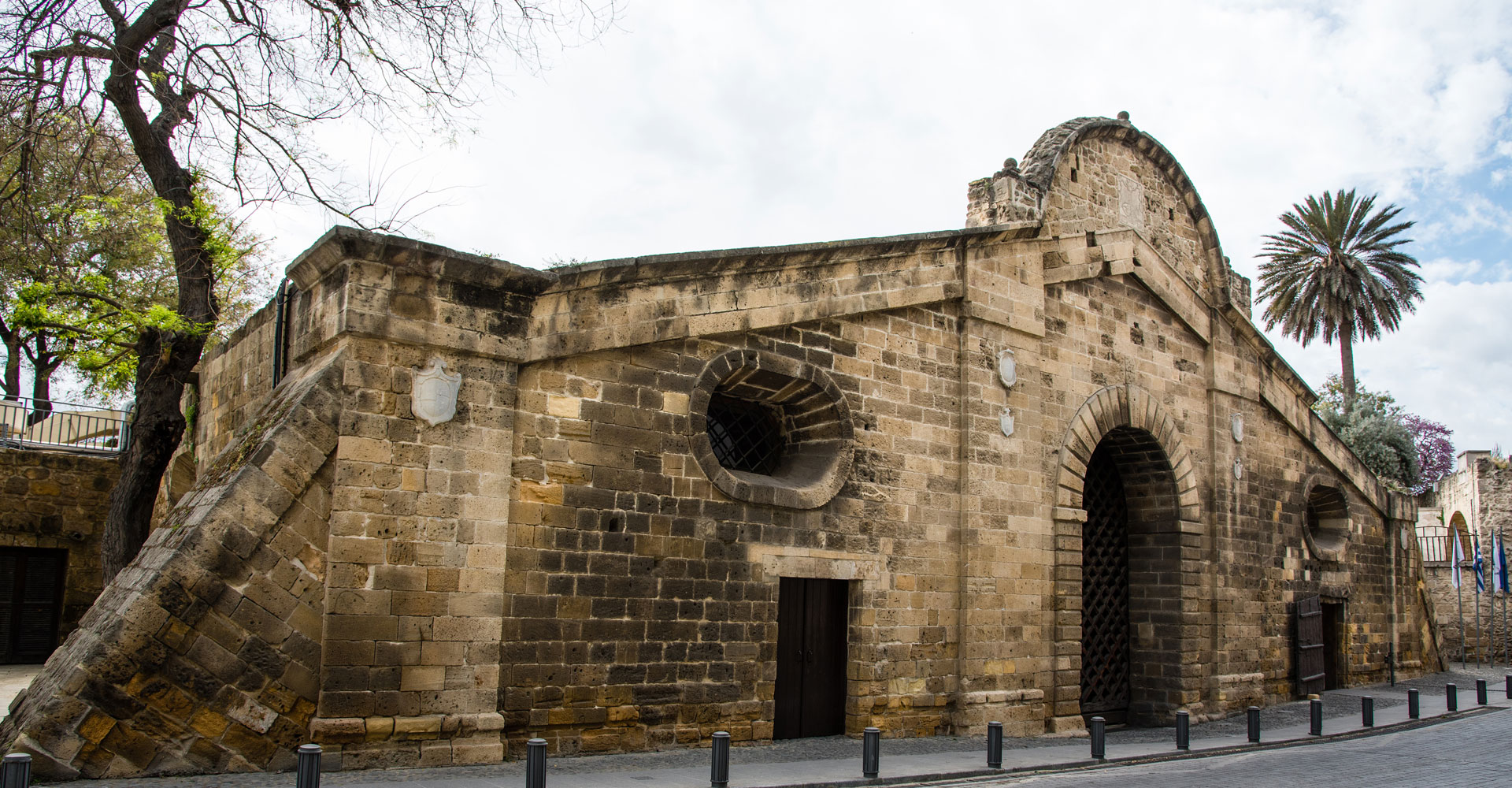
Πύλη Αμμοχώστου – Επαρχία Λευκωσίας
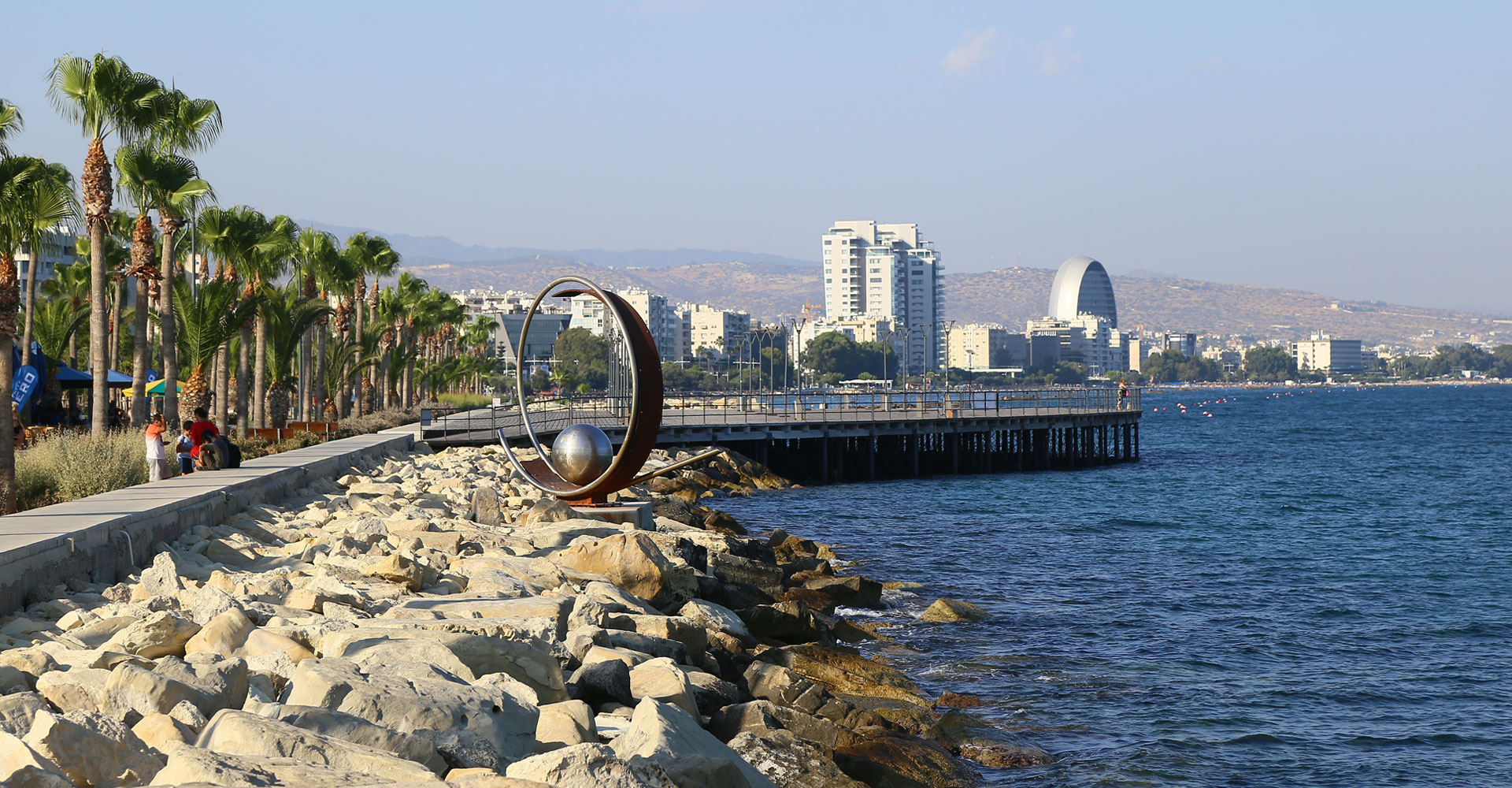
Παραλιακό μέτωπο – Επαρχία Λεμεσού
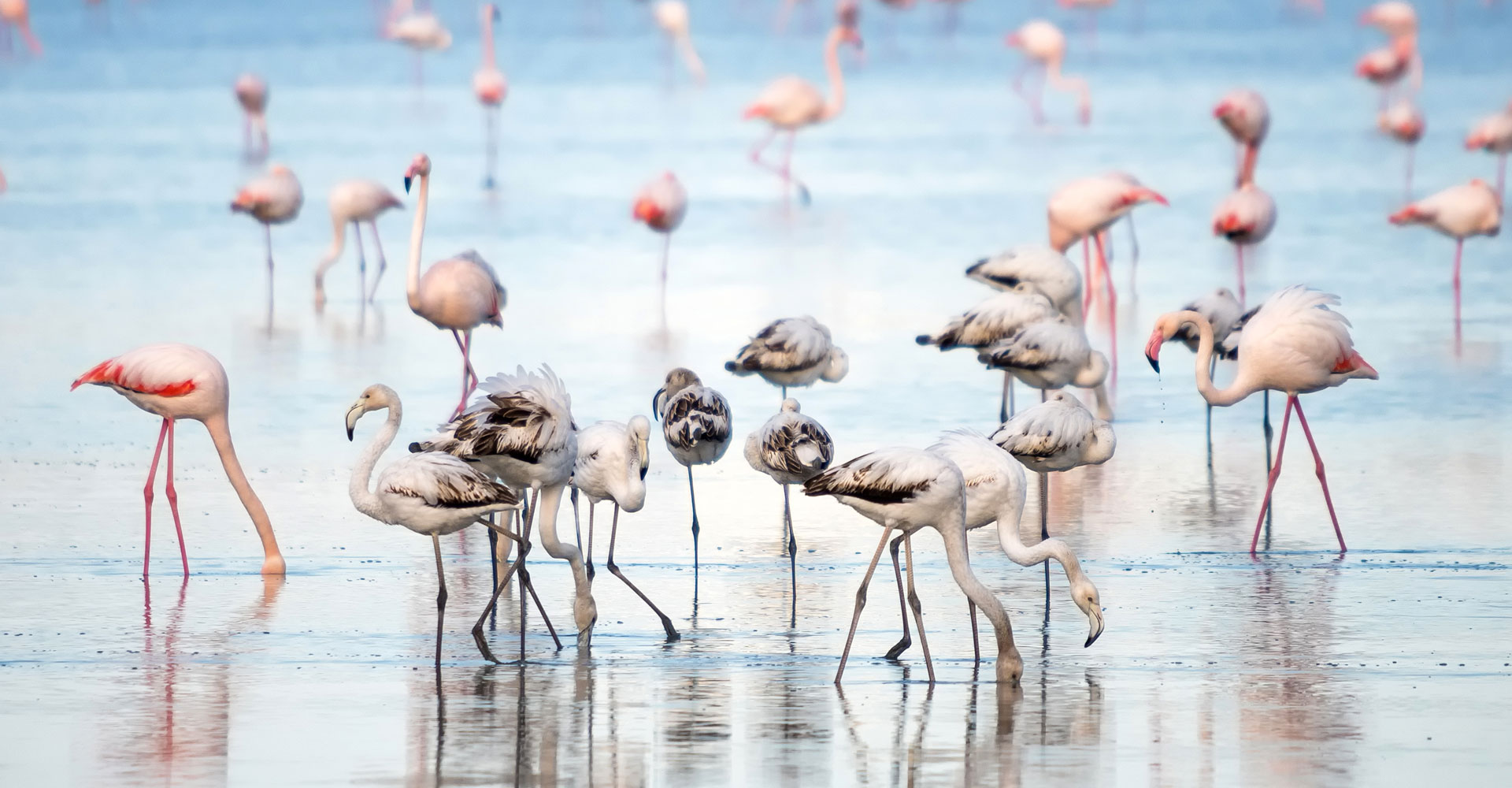
Λίμνη Αλυκής – Επαρχία Λάρνακας
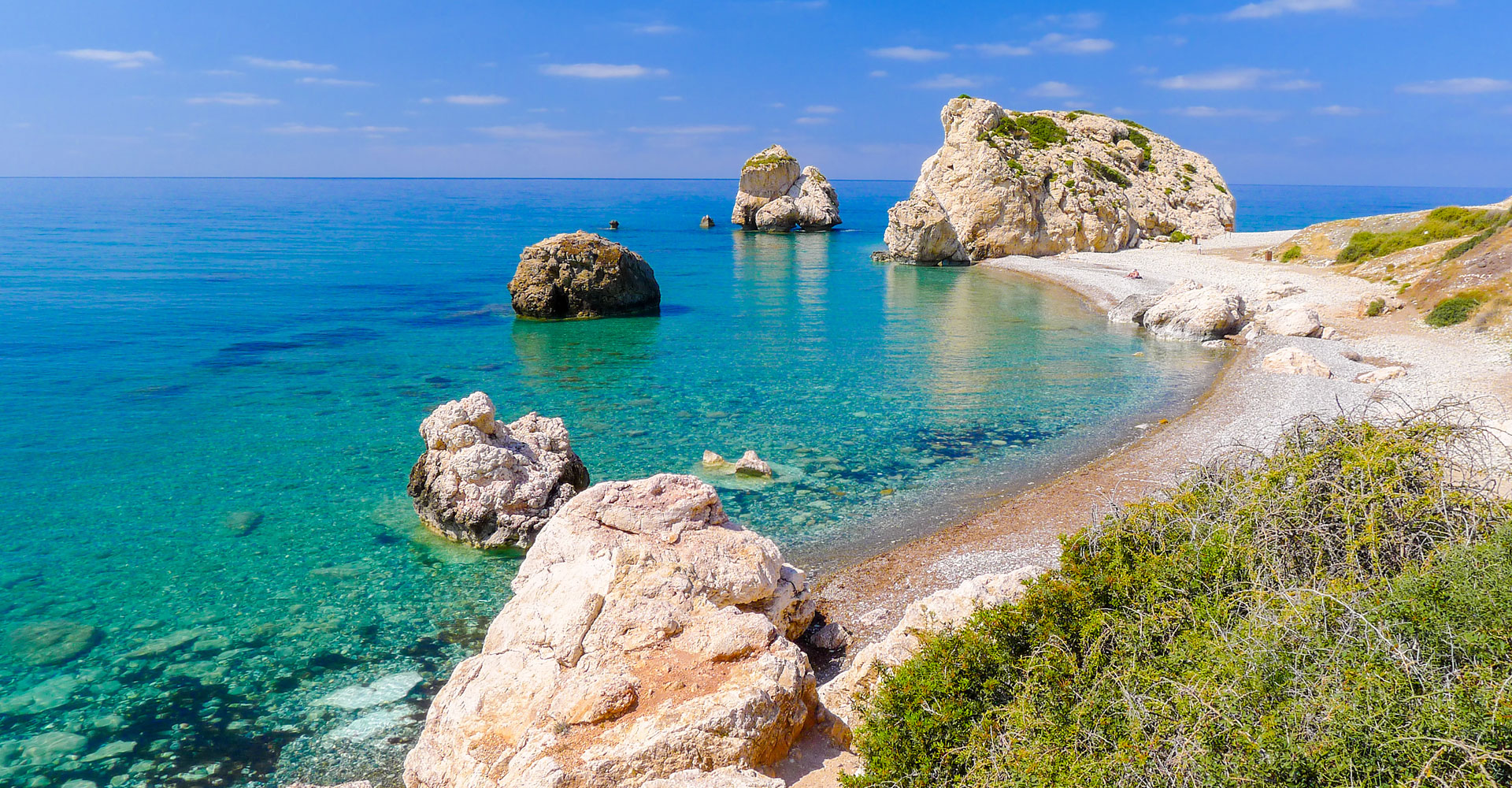
Πέτρα του Ρωμιού – Επαρχία Πάφου
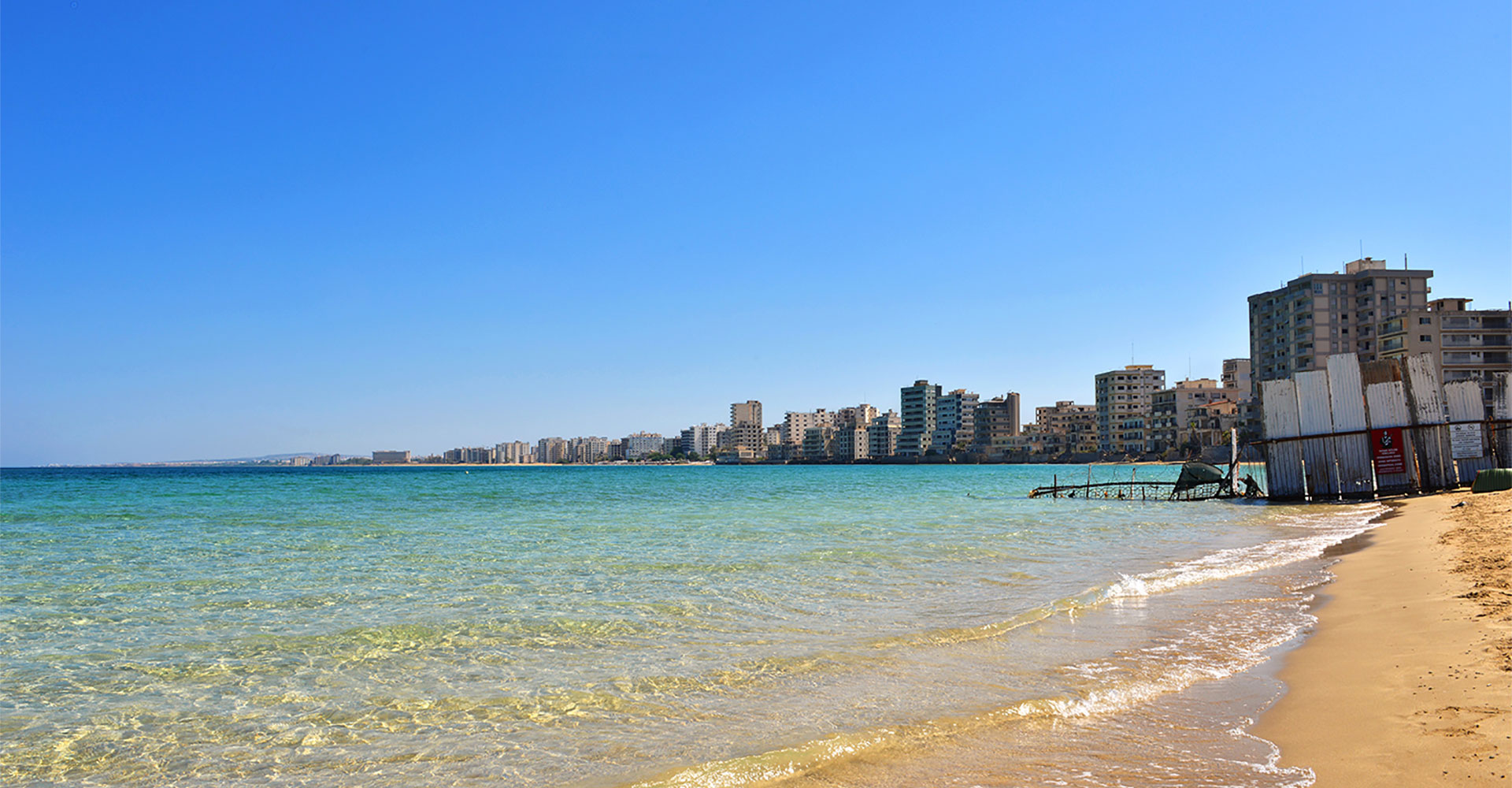
Παραλία Πόλης Αμμοχώστου - Επαρχία Αμμοχώστου
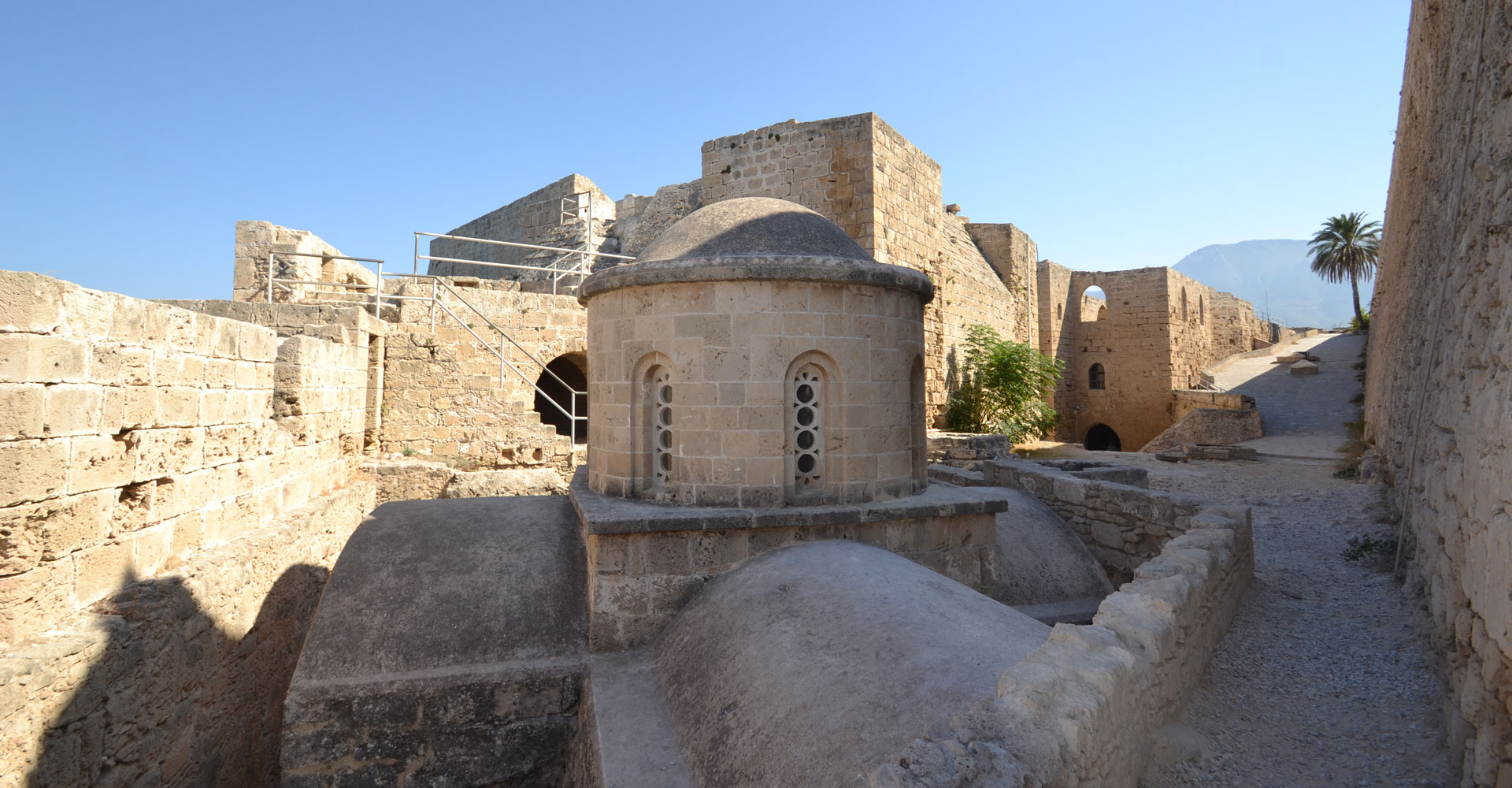
Κάστρο της Κερύνειας – Επαρχία Κερύνειας

Karavas
Contact Details
Municipality under turkish occupation since 1974
2 Militou St.
2028 Strovolos, Nicosia
Cyprus
Mayor: Nicos Hadjistephanou
Tel.: +357 22516937
Fax: +357 22516941
Email: Karavas.municipality@cytanet.com.cy
Website: http://www.karavas.org.cy
A few words
Introduction
Karavas lies on the north coast of Cyprus, in the occupied district of Kyrenia. All its residents, around 4,000, were forced to abandon their homes and properties in 1974, as a result of the Turkish invasion.
The displaced municipality of Karavas now operates in the government-controlled areas, in Nicosia. Its goals are to tighten the relations between its scattered residents, to promote the area’s history and culture, as well as to reinforce and support the efforts for a just and viable solution to the Cyprus problem, which will enable the return of all refugees to their ancestral homes under conditions of freedom and dignity and which will secure and safeguard their human rights.
History
The area of Karavas has always been inhabited since the Prehistoric times. Remains of the Neolithic Era were found in the area called “Gyrisma”, in “Pano Gitonia”. Clay vessels of the Geometric and Archaic period were also discovered in other areas of Karavas.
Within its municipal boundaries, close to the sea lies the acropolis of the ancient city of “Lambousa”, which prospered from the Classical period up to the Early Byzantine period. The famous “Lambousa Treasures” found in the area, which include objects like jewellery, religious items and silver spoons demonstrate its economic and cultural growth. Items of the Lambousa treasures are kept in the Archaeological Museum of Cyprus, the New York Metropolitan Museum and the British Museum.
The Municipality of Karavas
Karavas was declared a municipality in 1884. The Town Hall was built in 1958 on the main street of Karavas, the “Praxandrou Avenue”, and housed the offices of the Municipality, the Library, the Municipal Theatre and the Market.
Karavas is comprised of four neighbourhoods/parishes; Pano Gitonia, Exo Gitonia, Petrogitonia and Agios Andreas. Each neighbourhood is considered to be a Community and has its own Community President and Council.
Education
Initially, children from Karavas and the neighbouring villages attended classes at the monastery of Acheiropoietos. In the mid-19th C., a separate primary school started to operate and in 1883, a girls’ school. Before 1974 there were two primary schools, the First and the Second Urban School of Karavas that operated as mixed gender schools. There was also a private high school.
Economic Development
Lemon Cultivation
The area had notable economic growth as a result of the trade, the industrial development and the rich agricultural production. In the years prior the Turkish invasion, lemon cultivation was at its peak.
Apart from the ideal weather conditions, it was the water running from the town’s natural spring, irrigating the fertile plains of Karavas, which contributed to the development of the area.
Tourism
Karavas’ ideal climate and beautiful beaches contributed to the creation of small hotels and the development of local tourism. A few years before the Turkish invasion, Karavas had experienced a rapid growth in tourism. Modern hotels were constructed and new restaurants catered to the needs of locals and foreign tourists. Some of them were the hotels “Clearhos”, “Neraida”, Zephyros”, “Mare Monte” and the holiday spots “Fontana Amoroza”, “Prasini Kilada”, “Mili”, “Chrysos Vrahos”, “Platania” and “Pente Mili”.
Crafts
The people of Karavas showed remarkable talent in crafts, like woodcarving and weaving which were organized on a commercial basis. The unique in beauty and technique, lace “fervolites” which used to adorn the houses of Karavas was also used for commercial purposes, in order to contribute to the family budget. In 2017, “fervolites” was inducted in the National Intangible Cultural Heritage of Cyprus.
Churches of Karavas
Before 1974, Karavas had three parish churches, Agios Georgios (St. George), Agia Irini (St. Irene) and Panagia Evangelistria (Annunciation of the Virgin Mary).
The church of St. George was built in the southeast of Karavas, on the site of an earlier monastery, which was destroyed at the beginning of the 19th C. In 1825 the church was turned into a parish church. The existing church was built between 1843 and 1854 and it has a polygonal dome.
The church of St. Irene is built on the mountainside of Pentadaktylos, in the southwest of Karavas. It was built in 1804 by Protosiggelos Lavrentios and his son Hadjinikolas, who was killed by the Turkish ruler of Cyprus during the massacre of July 9th, 1821. The church is a single-naved, vaulted basilica with a polygonal sanctuary.
At the centre of the town lies the largest church of Karavas, Panagia Evangelistria, built in 1906-1917 with the proceeds of a fundraising among the inhabitants, under the supervision of the then mayor Gregoris Hadjilambros.
In the area of ancient Lambousa there are two more churches, the monastery of Acheiropoietos and the church of Agios Evlalios.
The Franco-byzantine church of St. Evlalios was built in the 16th C. on the ruins of an Early Christian basilica of the 5th-6th C. It is dedicated to the first Bishop of Lambousa.
In the church of Acheiropoietos, parts of a previously-built-6th-C.-Early-Christian basilica were incorporated. The main part of the church is of cruciform style and was constructed in the 11th C. The miraculous icon of Virgin Mary is believed to hide the Holy Cloth (Holy Shroud).
The monastery was the religious centre of the area and until 1222 AD was the headquarters of the Lambousa Bishop, who was one of the fifteen bishops of the island. The church used to celebrate on August 15, day of the dormition of Virgin Mary, and August 16, day of the Holy Cloth.
In the Municipal boundaries of Karavas there are the ruins of 14 chapels.
Contribution to the Nation’s struggles for freedom
Karavas’ participation in all the struggles of the Greek Nation for freedom was significant. Noteworthy is the town’s contribution to the 1821 Greek revolution for independence against the Ottomans, when the area’s residents supplied Konstantinos Kanaris with food and money.
Moreover, a great number of young men from Karavas joined the Greek army in the war against Turkey in 1897 and the 1912-1913 Balkan Wars. They also fought in the two World Wars and the 1955-59 EOKA liberation struggle. It must be noted that 65 men from Karavas were recruited as volunteers in the Greek army during the Balkan wars and more than 150 residents of Karavas fought in the Second World War.
The Turkish Invasion
Karavas was the first victim of Turkey’s invasion. The Turkish invaders first landed on the town’s coastal area “Pente Mili”, on July 20, 1974, without encountering any organized military resistance.
The small number of forces of the Cyprus National Guard could not fight off the invaders, who had already landed.
The inhabitants of Karavas, under the leadership of Yiannis K. Kitsios from Karavas, improvised a defensive line extending from the area of “Pente Mili’ up to the hills of the mountain. Their resistance lasted until August 6th, when the Turks managed to capture the entire area of Karavas during the ceasefire.
A total of 58 Karavas residents lost their lives in battle or were killed in cold blood during the invasion. After the capture of the town a small number of residents remained trapped in the town; they were all gradually expelled by August 1976.
Karavas Today
Today Karavas is occupied by the Turkish army and inhabited by Turkish Cypriots as well as settlers brought from Turkey. All of the above reside in illegally-seized Greek Cypriot properties.
All the churches and the chapels have been desecrated or destroyed. The central church of Evangelistria is now used as a mosque. The archaeological site of Lambousa lies abandoned without conservation. Many precious objects and other archaeological treasures have either been stolen or destroyed.
Buildings and other structures have been illegally constructed on many Greek-Cypriot properties, aiming at consolidating the illegal regime, which is systematically trying to wipe out any trace of Greek-Cypriot civilization and the area’s historic past.
The Residents of Karavas today
Nowadays the legal residents of Karavas are scattered in the government-controlled areas of Cyprus and abroad.
Karavas people have organised themselves into associations and clubs with significant activities. The refugee association “Karavas” was established in Cyprus, the “Lapithos, Karavas and Suburbs Association” in the UK, the “Lambousa Melbourne Association” in Australia and the “Lambousa Cypriot American Association” in the USA. Wherever they are, the people of Karavas preserve their customs and traditions. The most traditional event of Karavas called “The Lemon Dance” is organised every year by all the Associations, in Cyprus and abroad.
The main goal of their existence is the assistance to the efforts to return to the occupied areas of Cyprus through a just and viable solution, where all human rights are safeguarded. For this purpose, they organize various events to highlight the history, culture, and traditions of Karavas.
All the Bodies of Karavas in Cyprus, the Municipality of Karavas, and the organisations Karavas Refugee Association, the Karavas Cultural Foundation, the School Board, the Sports Union “AEK”, the Youth Council and the Sea Scouts are housed away from home, at the premises of Karavas Cultural Foundation, in Strovolos, Nicosia. The building was constructed with the contribution of the people of Karavas.
At a glance
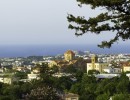
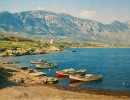
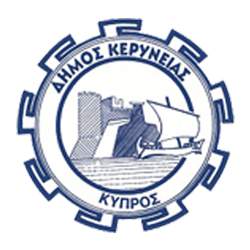
Keryneia
Contact Details
Municipality under turkish occupation since 1974
8 Markou Drakou Avenue
1102 Lefkosia
Cyprus
Mayor: Iosif Violaris
Tel.: +357 22818040
Fax: +357 22818228
Email: info@kyreniamunicipality.com
Website: https://www.kyreniamunicipality.com/
A few words
KYRENIA: A SMALL TOWN IN CYPRUS UNDER MILITARY OCCUPATION BY TURKEY, SINCE 1974
To this day, Kyrenia continues to be illegally occupied Turkish Forces and our Municipality functions in the Government Controlled Areas until we return to our homeland
A brief reference on the facts
- According to the 1964 Land Registry Office Records, Greek Cypriots owned approximately 78% of the privately-owned land in the areas which are currently under Turkish occupation, while persons belonging to the Turkish Cypriot community owned approximately 21%.
- The total population of the Kyrenia District before the Turkish invasion was estimated at 32,586 out of whom only 4,382 were Turkish Cypriots and the percentage of their immovable property was only 12%.
- On July 20, 1974 Turkey invaded the island of Cyprus and occupied 37% of the country’s northern sovereign territory. 170,000 Greek Cypriots, who constituted 2/3 of the inhabitants of the currently occupied area, were forcibly and brutally uprooted and displaced from their homes.
- The inhabitants of the city and District of Kyrenia were the first to be uprooted, leaving behind them a history to be distorted and a civilization to be insensitively destroyed by Turkey.
- The displaced Kyrenians, including women, children and the elderly, were forced to flee to the government controlled areas with only the few possessions they were able to scramble together while fleeing, which were mainly the few items of clothing they happened to be wearing.
- Turkey has implemented a geographic separation of the population along ethnic lines, by forcing both Greek Cypriots and Turkish Cypriots out of their homes.
- Turkey violated international humanitarian law through indiscriminate attacks on civilians, summary executions, torture including rape, pillage and the destruction of civilian property and cultural heritage.
- The properties of the expelled native residents were distributed among the thousands of Anatolian settlers brought to the City of Kyrenia by Turkey, while Turkish businessmen benefited by utilising these properties for profit, and selling them to Europeans and other foreigners, despite rulings by the European Court of Human Rights condemning these practices. This practice has led many foreigners who have purchased stolen property from the illegal occupants, to the European Court of Human Rights, which has repeatedly ruled in favour of the original legal property owner.
- Ungraceful cement hotels and casinos, the uprooting of century old trees for the purpose of constructing roads and the vulgar disorderly housing development offend the environment and litter the picturesque beachfront of the Kyrenia city.
- Houses, churches, public buildings and schools have been pillaged and destroyed to serve the occupation’s regime international crime of cultural genocide and the fundamental Turkish aim to complete the Turkification of the occupied areas and the eradication of any element that would connect them to the past and their legal inhabitants.
- Turkish Cypriots and Greek Cypriots have lived together for centuries and share the same social identity. Many Turkish Cypriots oppose the present situation and supports the return of the settlers to Turkey.
- It is estimated that 57,000 Turkish Cypriots out of a population of 116,000 in 1974 have emigrated since the invasion. Turkish settlers are estimated at around 160,000 compared to the 87,900 Turkish Cypriots that remained in the occupied areas of Cyprus.
The UN General Assembly and Security Council, as well as other international organizations have adopted a series of resolutions condemning Turkey’s aggression against Cyprus.
These resolutions demand the return of the displaced people to their homes in safety and the ascertainment of the fate of all missing persons. In addition, they call for the human rights of all Cypriots and for the independence, sovereignty and territorial integrity of the Republic of Cyprus.
Moreover, the European Commission and the European Court of Human Rights have found the Government of Turkey guilty for gross and systematic violations of human rights in Cyprus.
Any movements by Turkey to promote the de facto recognition of the illegal secessionist regime would be in direct violation of international law and UN Security Council resolutions, especially resolutions 541(1983) and550 (1984).
Under international law, the regime established by Turkey in occupied Cyprus is illegal. The European Courts and the UN Security Council have affirmed the Turkish Cypriot regime has no legal status in the international community.
We the Mayor and the Municipal Council of the town of Kyrenia in exile
In honour of all the Kyrenians who were killed during the war or are still missing; on behalf of all the Kyrenians who were violently displaced from their homes and their beloved town of Kyrenia and our parents who died as refugees away from their ancestral homes,
request your strong support towards our efforts to:
- Restore our fundamental human rights and to be equally respected as European Citizens as per International laws and the European Acquis Communautaire
- Return back to our home town of Kyrenia and our homes and properties in safety, freedom, peace, security, free from Turkish troops, Turkish settlers and guarantors
- Respect, protect, and restore our religious, cultural and environmental heritage, which is an integral part of the European heritage
Please support us in our struggle for freedom and our return home to our historically and culturally unique city.
The Mayor and the Municipal Council of Kyrenia
At a glance
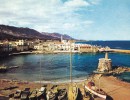

Lapithos
Contact Details
Municipality under turkish occupation since 1974
Prodromou 36
2063 Strovolos
Cyprus
Mayor: Paradisa Mourettou
Tel.: +357 22427733
Fax: +357 22427731
Email: demos@lapithos.org.cy
Website: www.lapithos.org.cy
A few words
Historical Milestones
Situated merely 14 kilometres from the city of Kyrenia, it is built amphitheatrically on the feet of Pentadaktylos, lying among lemon orchards, reaching as far as the sea.
The place never stopped being inhabited. Archaeological finds, ancient tombs, churches and chapels form an unbreakable puzzle of the ancient and Christian world.
The founder of the ancient city of Lapithos, Praxandros, came from Laconia in the Peloponnese. It has been one of the ten Kingdoms of Cyprus and had known fortune and great glory.
Through wars and battles with the invaders, its people managed to survive and turn the town into heaven on earth. In 1878 it was recognized as a Municipality and begun developing rapidly in every account. Its course was arrested violently by Attila, the barbarous invasion of Turks to Cyprus in July 1974. After a hard and unequal battle, Lapithos fell in the hands of the Turks on August 6, 1974.
Its monuments were destroyed, its churches desecrated, its inhabitants driven out. Turkish Cypriots and settlers now want to “rule” it by force.
For the first time since they had been refugees after the occupation, its Greek Cypriot inhabitants were able to set foot on its soil in 2003 going through passport control in order to visit their fathers’ land as «guests», a land that was waiting for them patiently, hurt and stripped bare.
But Lapithos is not a visiting place; it is a place of return.
Lapithos was one of the most important ancient city – Kingdoms of Cyprus. Its history can be traced back in time ranging from prehistoric times to the Byzantine Empire. During the early Byzantine times the city was also known as Lambousa, i.e. fulgent, because it shone thanks to its wealth, prosperity and majestic buildings. Maybe even from the bright light of its harbour’s lighthouse.
The ancient city of Lαpithos was built by the sea, exactly opposite today’s Lapithos and Karavas, where ancient ruins can be seen to this day. That is where the historical Monastery of Panagia Acheiropiitos (Our Lady of Acheiropiitos) and the Byzantine temple of St. Evlalios stand.
Near today’s settlement of Lapithos, have lived people since the Early Bronze Era. Excavations to tombs that take place from time to time have shown that the whereabouts of Lapithos were being used as cemetery from the Middle Bronze Era until the archaic years. The archaeological excavations have brought to light fine pottery samples, metallic objects and hundreds of other works of miniature craft work. In a tomb in Lapithos, the remains of a horse’s skeleton, the oldest to the day in Cyprus have been found.
Important ceramic and bronze objects from Crete come from Lapithos, which implies that ever since the Early Bronze Era had contact between Crete and the northern shores of Cyprus.
The pottery archaeological finds prove that there was a thriving pottery handicraft establishment since ancient times and also that Lapithos was a processing centre for bronze.
According to the ancient tradition, the city of Lapithos was founded by ancient colonists after the mass colonization of Cyprus by the Greeks, during the 13th – 12th century B.C. Praxandros, from Laconia in the Peloponnese was its founder. Together with Cepheus and many colonists came and settled down in the land of the Golgos’ goddess, Aphrodite and they named it Lapithos, from the part of Laconia bearing the same name, i.e. “Mountains of the Lapiths”.
Lapithos was one of the most renowned cities of Cyprus, not only in ancient times, but also later, during the Byzantine period and the rule of the Franks.
In 4th century B.C., Lapithos is mentioned among the nine Kingdoms of Cyprus and its last king was Praxippos. Archaeological finds attest to the existence of the Greek element side by side with the eteocypriot element, while both retained their own characteristics.
During early Christian times (25 B.C. – 250 A.D.) it continued being one of the four provinces of Cyprus of Lapithea to know great substantial advancement.
During Hellenistic and Roman times, the city had striking public buildings. It boasted a Gymnasium, a Theater, a port, a shipyard and many workshops.
Occupations of Cyprus-Lapithos from the Ottoman period to-date
In 1821, Lapithos took part vigorously in the struggles for the liberation of the nation. Many valiant young men from there fought and gave their lives during the great uprising. Among them was Ioannis Karadjas, one of the comrades of Rigas Feraios.
On the 9th of July, 1821, Chadjilias, one of the elders, and 16 more martyrs from Lapithos and Karavas stained the swords of the Turkish oppressors with their blood.
At the coast nearby, at the area called “Asprovrisi” (white fountain) the fire ship captain Constantine Kanaris, who was put up as a guest in the mansion of Georkadjis Paspallas, anchored his ships. The people of Lapithos gave him food, money and other valuable objects lavishly and many young Lapithian men embarked on his ships with other volunteers who wanted to fight in the Greek Revolution.
1878: Lapithos is established as a Municipality with an appointed Municipal Board and Mayor.
In all national struggles, Lapithos contributed significantly: in the Balkan Wars of 1912-13, in the first and second world wars and in the Asia Minor Campaign with the exceptional General of the Greek Army, Ioannis Tsangarides from Lapithos, standing out for his bravery.
During English rule, from 1878 until 1960, Lapithos faced the same destiny as the rest of the island. It offered a lot with its participation to the liberation struggle of 1955-59.
In 1964, because of the intercommunal violence after the Turkish Cypriots’ rebellion, the Turkish Cypriot inhabitants of Lapithos abandoned it on the instructions of Ankara and moved in to the town of Kyrenia.
In 1974, in August 6, during the cessation of arms and before the second phase of the invasion, Lapithos is captured by the Turkish invaders.
A red half moon steals away its sun. The progress of Lapithos is arrested once more, but not so its history, which continues resting between the strong embrace of Praxandros and Dighenis Akritas underneath the stern look of Pentadaktylos.
Religious Landmarks of Worship
The large expanse of Lapithos, the relatively large population and the deep belief and piety of Lapithians are the reasons behind the many churches of the town and several chapels around it.
Six churches divide Lapithos into six parishes, each of which exhibits characteristics of an independent town set within the larger Lapithos community.
In Upper Lapithos there are the parishes of St. Paraskevi and St. Anastasia. In Lower Lapithos are found the parishes of Apostle Lukas, St. Theodore and St. Minas with their own churches.
The church of St. John the Baptist
It is the oldest church in Lapithos, built in the 18th century at the centre of Lapithos.
Its exquisite shrine was adorned with beautiful Byzantine icons dating back in 1973.
In the centre of Lapithos, in an area between the three parishes of St. Theodore, St. John the Baptist and Apostle Lukas, there was the seventh parish of the Municipality of Lapithos which belonged exclusively to the Ottoman community, known as the Turkish quarter. Catering exclusively to the needs of the Turkish Cypriot residents of Lapithos, [this quarter] had its own Turkish Cypriot Community Council President, Turkish Cypriot school and dedicated places of worship with two mosques.
Country Chapel
Small churches, corner stones of the Lapithians’ faith. Desecrated, without bell towers or crosses. The Turkish invaders have turned some to stables for animals and other to dance classes’ halls. In their ruins, live the saints that have refused to leave. The small chapel of St. Marina out at the fields of St. Theodoros’ parish stands looted without icons, without censers.
High up on the Krinia area the small country chapel of Panagia Kriniotissa (Our Lady of Krini) enwrapped in silence, half-rejected. It breathes slowly awaiting every Spring for scents of Resurrection from the white lilies, who, ignorant of war and invasion, continue to grow around it.
Rooted in this Lapithos land, despite what the times have brought, the small Church of St. Paul stands weather – beaten in the middle of the plain, beneath the shadow of Pentadaktylos. From its ruins rise scents of incense and myrtrh.
The beautiful frescoes of these two churches became prey to ruthless time; they still stand stubbornly against the indifference of the invader, against the slaps of wind and rain, patiently under the rays of the burning sun, refusing to disappear from the dilapidated walls.
At the parish of St. Paraskevi, St. Andronicos fixes his eyes to the deep sea opposite and awaits Theseus to drive the Minotaur away. On his doorstep, for many years refugees from Lapithos light the candle of their patience.
The Chapel of the miraculous St. George Exorinos, as it was widely known, is located in the parish of St. John the Baptist, although it is accounted by the Church that it belonged to the parish of St. Paraskevi. The northern courtyard of the chapel defined the boundaries of the two parishes.
In this parish, incantations are heard and also prayers to exorcise evil. Whispers of believers brought by the wind from afar surround the chapel of St. George Exorinos. This last chapel of the miraculous St. Kournoutas, mute and silent, awaits patiently the moment that will curse again the non-believers.
Traces of St. Antonios vanished long ago, but its memory remains a loyal and inseparable companion for the people of Lapithos.
The shrine of St. Mavri withstood thirty years of occupation, before the faithless obliterated its traces from the parish of St. Minas. From high above, Pantocrator is watching silent.
St. Varvara had the same destiny as the chapel of St. Antonios.
Forgive them, for they know not what they do.
Chapels – Cementaries
“These small churches: the tenacity of the people, in the countryside – a tenacity that lasted for centuries”
George Seferis
Airkotissa
“The dead are not asleep – they are listening
the dead are not asleep – they are hurting
who will wash away the shame?”
“The gate at St. Eudokia
sealed the intruder’s shame.
At her doorstep the Angels count
the years of silence – the years of patience.”
Archangel
The Attila storm passed.
Its marks run deep.
From the crumbled walls of silence,
unfolds his fury.
The dead nearby breathe the scent of resurrection.
St. Mamas
Windblown wreckage of the tempest
that covered this land of Saints.
Empty graves, broken crosses.
But the dead are here, living guardians
to this land. Sweet smelling incense of Spring
that always comes – always blooms.
St. George Spiliotis (of the Cave)
Proud and defiant, the chapel of St. George of the Cave high up on the hill, inside a cave overhangs the parish of St. Minas. Without any hymns or prayers, it fights
Education – Educational Schools
Elementary School
Forward-looking and knowledgeable, Lapithians invested in the education of their children.
They learned how to read and write from priests.
Then there were the clandestine schools.
At the end of the 19th and in the beginning of the 20th century operate in Lapithos the first two schools, both of them boys’ schools. One was situated inside the rooms of St. Paraskevi and the other on a tall rock “in the castle” above the Town Hall. The girls’ school of Lapithos that was built in the yard of the church of St. Anastasia by the tall rocky cliffs replaced the small girls’ school that operated from the chambers of the church of Apostle Loucas. Later, around 1945, mixed gender schools were established.
In 1974 in Lapithos there were three schools. The 1st Urban Academy that used to be the 1st Elementary School by the Town Hall. The 2nd Urban Academy in the parish of Ayios Theodoros and the older 2nd Urban Academy, “School high up” as it was called, on the tall rock by the church of St. Anastasia was used as community kindergarten and workshop rooms for the 1st Urban School.
They were all schools with a long tradition that taught Lapithian students the right values and qualities, morality and patriotism. They were imposing neoclassical buildings, stone-covered with capitals reminding them of their ancestry. The schools of Lapithos, along with the rest of the buildings, were special tokens of the town’s culture and the continuity of its long civilization.
Lapithos Hellenic High School
Built in an idyllic green scenery, in the parish of St. Minas, it consisted of two big building complexes that gave it a monumental character and contributed to the beauty of the charming town.
Its story begins in 1910, when, under the auspices of the Metropolitan of Kyrenia at that time, the people of Lapithos and Karavas established the “Higher Hellenic Academy of Lapithos & Karavas”.
Thirty years later, begins the gradual building of the school using donations from the inhabitants and emigrant Lapithians abroad. It first opened in 1943 and made history in Lapithos and the Kyrenia province as a whole.
The Lapithos High School was the centre of cultural events and other activities. Its staff consisted of tireless pioneers of culture who rose to prominence by their creative path, gracing even more this beautiful town.
The flower festivals, ancient drama plays, gymnastics, games and other splendid events that were organized in the High School yard remain alive in the unfaded memory of Lapithians. These games were the sports games for the whole of the Kyrenia province that provided athletes and champions with fair play as their only goal at all times.
On August 6, 1974, in the yard of the proud Hellenic High School of Lapithos among bombardment and fire, the last modern tragedy of Lapithos and its people was performed. Under a red half moon, Lapithos was destroyed.
The Lapithos Reform School
On the coastal front, between the Kanaris Coast and west of Our Lady of Acheiropoietos, the Pancyptian Reform School of Lapithos, the only school in its category, was founded in 1943. Upon the independence of the Republic of Cyprus, the school was renamed to “The Labousis Reform School”. It was abolished a few years after 1974, when new technical legislative infrastructures and the new order did not allow the continuation of its operation.
Post-war, it remained in operation for another five years until the end of 1979, with a new structure, in the abandoned military installations of the English “Salamandra” at Polemidhia in Limassol. The Reform School was known, among the wide masses of the locals of Lapithos and Karavas, as “The Penitentiary of Lapithos.”
According to Englishmen, the School from the beginning of its operation demonstrated impressive results and pioneered among the Commonwealth countries. The then young felons that were inmates of the School (children under 18), needed more care and protection, therefore the aim of the School was educational rather than punishment, which was applied in practice and fully achieved.
Folk Arts
Lapithos was the largest and most important handcraft centre in Cyprus. The main types of craft developed there are Architecture, Pottery, the Production Process of Silk, Weaving, Embroidery, Blacksmithing, Basketry and Woodcarving.
Craft is man’s ability to perform a manual task based on skill, experience and application of technical expertise in practice. The traditional craftsmen were mainly self-taught and acquired skills and experiences working on the job while watching closely the oldest and experienced craftsmen. The possibility of education through books and theory was infinitesimal, but if there was such a possibility, things were even harder because all these traditional artisans, although they were hardworking and industrious, the majority of them were mostly illiterate.
Almost all manual crafts were present in Lapithos and were interrelated and interdependent with each other, so Lapithos, until today, is rightfully characterized as the “largest multi-craft centre of Cyprus”, with unique credentials in projects, objects and structures.
Architecture
Several Lapithians, leading craftsmen of the art of building, were renowned and frequently sought-after manufacturers; they have left behind them projects and buildings that cause admiration, wonderment and many unanswered questions for today’s architects, engineers and contractors. Through the art of building we identify unique and impressive elements of folk architecture, which surround and project it nationwide.
In the stone-build buildings of Lapithos, in addition to the functional interior arrangement, the external appearance had to always be beautiful and impressive with carved arches, large doors with a commanding presence, stone carved projections or indentations called “kouzostates”, iron-secured shutters and stone carved small size openings located at a considerable height called “arseres”, while a significant number of the mansions had their façade interspersed with both the engraved date of manufacture, as well as the gorgeous carved coats of arms.
As expected, the Lapithos craftsmen and master builders were not limited to building only in their hometown. Judging by their achievements, their works testify presence throughout Cyprus. In Nicosia we can still see the Eleneion Elementary School, and the buildings of the hotels Acropol, Nicosia Palace and Regaenas. In the Pafos province the fountain of Pegeiotissa, the Fountain of Lysos, the Church of St. Minas at Neo Chorio, the Church of St. Mamas in Peristerona, Paphos. In the Tower of Limassol we admire the Church of Our Lady of Aipyrgotissa and so much more.
Ceramics – Pottery
Lapithos especially boasts its artistic pottery, the origins of which are lost in the depths of time and reach all the way to 5000 B.C according to the archaeological finds.
Tradition claims that the art of Lapithos’ clay pots was invented by Kinaras or Kinyras and it has been preserved from one generation to the next until today.
The reputation of the Lapithos pots and especially the “glazed” ones is not limited only in Cyprus, but was spread around the world. Taking clay from their land and water from their springs that never tried out, they created in the famous pottery wheel extraordinary art with craftsmanship and imagination.
The famous and one of a kind “glazed” objects found in Lapithos are incomparable works of art, beautiful in colour and style. They constitute the continuation of the Byzantine Medieval Ceramic Art by keeping the feast and the brightness of colours and patterns, as well as the brilliance and magnificence of ceramic objects of the erstwhile, mighty and flourishing Byzantine Empire. The renown industrious, indefatigable and forward-looking potters of Lapithos kept the lead in the production of everyday use pottery, both in Cyprus and the region until the 1950s, when during this period glass and plastic literary invaded our lives, displacing the market in traditional clay object.
Samples of remarkable ceramic art, brought to light by archaeologists, as well as the pottery wheel, constitute a living proof that the art of processing clay was advanced and ingrained at ancient Lapithos centuries ago. Pottery ceramic art from important excavations from ancient times (3000 BC) is the most authoritative and conclusive evidence.
For the ceramists of Lapithos, the continuation of this long tradition is a debt forwarded to future generations, as they love the profession and feel that they have an obligation to continue the art, to preserve it and to deliver it in trust for future generations.
Ironwork – Metallurgy
Ironwork and metallurgy were among the crafts that were extensively developed in Lapithos. The archaeologist’s pickaxe brought to light finds that prove that Lapithos since ancient times was a centre of iron and copper processing.
At the “komodromia”, the blacksmiths workshops of Lapithos, many farming tools and household utensils were made with tremendous skill, such as the much known “tsiakkouthkia”, i.e. pocket knives, as well as knives, axes and sickles that were known as the “Lapithkiotika”or the ones from Lapithos.The blacksmith of Lapithos, under the watchful eyes and supervision of god Hephaestus, sweaty and dirty, relentlessly forges steel in the fire and on the anvil, until it reaches its finished form, ready for use in all sorts of metal tools and objects.
Blacksmithing in Lapithos dates back to ancient times, with evidence and objects that adorn many museums, both in Cyprus and abroad.
Blacksmithing, the art and industry of processing iron, is one of the oldest complex arts; it was advanced in Lapithos and has left its seal up to 1974, but the invasion failed to suspend it and it continues until today.
It wasn’t only the sickles, axes, knives and the Lapithean “tsiakkoudkia” (small knives) manufactured by traditional craftsman. The Lapithean “tsakoudkia” might have been the hallmark for each Lapithiotis, but the amplitude of the generated objects was huge.
Εmbroidery
Important among the folk arts of Lapithos was embroidery. Using a crocheting hook or a needle every woman from Lapithos embroidered her trousseau but they also sold their work in order to contribute to the family income. Using a needle and thread they embroidered the known “xiftita” type, and using a needle they made their famous lacework. Many times over have the Lapithian embroidery received prizes in shows abroad. Among that embroidery stands out the lace by Meropi Siakidou that gave Cyprus the golden medal at the 8th International Biennale of hand-made lace, “pippila” type in 1998 in Italy.
Engaged in the art of embroidery was the female population of Lapithos, especially young girls, who began from a young age to develop into experienced embroiders, weavers and seamstresses.
The magnificent handmade embroidery of Lapithos, the needle-knot, the ravellings, the cross stitch, the coptic, the undulate and the lace were the pride of the Lapithean Embroidery.
Embroidered on tablecloths, pillowcases, scarves, bedding, linens, silks and many more, they [their designs] diverted the best comments on the uniqueness of their art and the mastery of their making.
Apart from pleasure, fair play and competition in good faith between the embroiders of Lapithos, the produced embroidery that was not meant for the dowry of each girl, became an excellent product that was made available for sale at relatively good prices for that era, thus contributing positively to family income.
Small traders of that time, the known “Kentitarides” coordinated the whole production and afterwards they would put the embroidery up for sale in every corner of Cyprus. Some exceeded the Cyprus borders, reaching Ionia-Asia Minor, Venice and England.
The thread, the needle and chisel and in some cases the fabric, were the main items and the raw materials used by the women of Lapithos.
Beyond that, imagination should be employed, a sense of perfection and the skill of each embroider to produce something perfect and admirable.
Only in this way, with needle and thread without fabric, could the unique “velonokompos” (needlework) of Lapithos be made, a quite difficult embroidery that required a specific artistic skill, beauty and perfection; the same for the lovely lace, known as the Lapithean “pipilla”, a unique kind in the whole of Cyprus.
Another distinctive embroidery done on fabric in Lapithos from many years ago, was the “xiftito” (what later prevailed as Lefkaritiko), which initially was on silk fabric and later on linen.
Weaving Craft
Τhe Weaving craft as well as Pottery have in Lapithos a centuries’ old tradition and gave with their masterpieces great fame to the community. In 1955 in Lapithos worked 500 looms. The woven textiles of Lapithos of great variety and art were renowned not only in Cyprus but also abroad where they were exported by the merchants of Lapithos.
Woven textiles from Lapithos were among the more stunning textiles that Cypriot weaving has to show. Weaving was also for many women their main means of subsistence.
Lapithos was famous for its silk and was considered a pioneer not only in silkworm breeding but also in the craft of silk industry. In the old times almost every house bred silkworms. They exported to the exterior cocoons and silk thread.
Woodcraft – Woodcarving
Wood carving, the art of wood elaboration and decoration was developed in Lapithos from a very early time and has to exhibit some extraordinary works. Farming and building tools, household utensils, furniture, ecclesiastical utensils and more, all of them were hand-decorated with beautiful geometric depictions and others from the fauna and flora.
Truly renowned were the marvelous chests from Lapithos, where the women kept their trousseau and no house was without one.
The woodcraft, related to the art of building, predated all other crafts, since natural timber was available straight from the forests and was used in antiquity for the construction of makeshift wooden settlements.
Since the early years, woodcraft in Lapithos, in combination with other crafts such as ironsmith and building, developed largely and was maintained in various forms to the present day, as a remarkable and admirable folk art.
In combination with heavy blacksmiths, shipyards were established and ships were built. “Lapathos is the city with a mooring-place and dockyards; it was founded by Laconians and Praxander”, says historian and geographer Strabo in his report on Lapithos on the year 30 AD.
Especially for the art of goldsmith, important and worthy goldsmiths are mentioned throughout the last century, excellent craftsmen of fineness and detail, since they managed to replicate even the golden pound of the British Crown; the British colonial government took too long to identify them because of the perfection of the replication. The illegal workshop had been set up in a cave on Souli street, between the Town Hall of Lapithos and the Laynadon region.
The Watermills of Lapithos
The watermills of Lapithos, counting nineteen of them in the 1940s and twenty-one prior to that date, were built along the river flow of Kefalovrysos that crossed the parish of St. Paraskevi, continued through the parish of St. John the Baptist and lead to the lush plains of Lapithos.
In historical references (see Cyprus Chronicles, No. X. 1934, page 230) the presence of watermills of Lapithos has been referenced before the Ottoman period in Cyprus and particularly in 1478 AD, where the Italian Jovanes de Negreponte, in a will of the time, referred to owning a mill in Lapithos. This confirms the existence of watermills in Lapithos during the period of the Venetian rule on the island, and even during the years of the French rule, since Latin names are mentioned.
The last three mills were located in the parish of St. John the Baptist, while the rest were in the parish of St. Paraskevi.
The construction and continuous use of so many watermills since the French rule testifies to the existence of a strong industrial activity and developed life in Lapithos that reaches through the depths of centuries and that was due to the ingenuity and industriousness of the Lapithiotes. They found the long-viral power of water and seize every possible way for the benefit of residents and the economy, thus we see mankind today, amid the industrial revolution with difficulty and anxiously, trying to return back to primary energy, like water, the sun, the wind, ie areas were Lapithiotes pioneered hundreds of years ago.
At a glance
LINKS
Contact us
Address:
78, Rigainis Str. CY-1010 Nicosia
P.O.Box 22033, CY-1516 Nicosia, Cyprus
Tel: +357 22 445170
Fax: +357 22 677230
Email: endeky@ucm.org.cy
